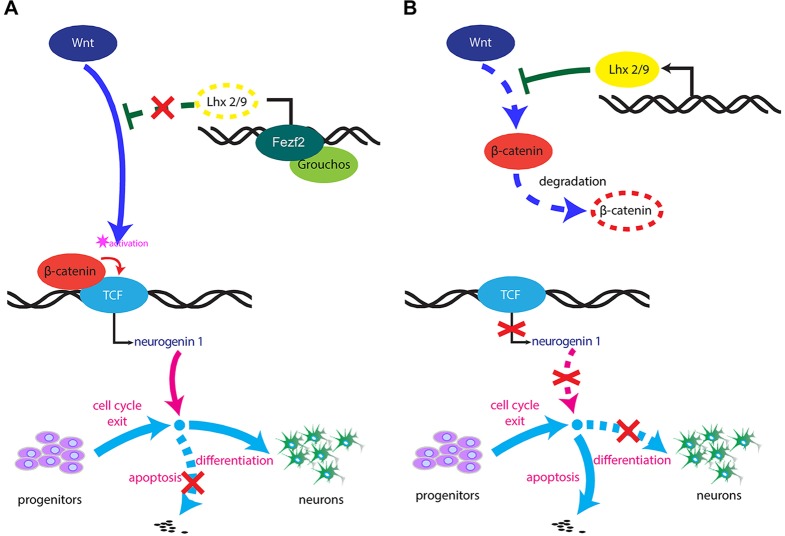Fig. 6.
Mechanistic model of Fezf2 function in the forebrain. (A) In the presence of Fezf2. Fezf2 interacts with Groucho-family repressors and inhibits the expression of lhx2/lhx9. Consequently, β-catenin binds to the Tcf complex and Wnt signalling is activated, promoting the expression of neurogenin 1 and thus stimulating neuronal differentiation. (B) In the absence of Fezf2. Lhx2/Lhx9 inhibits Wnt signalling, resulting in the degradation of β-catenin. In the absence of β-catenin, the Tcf complex is maintained in a repressive state. This repressive Tcf complex inhibits neurogenin 1 expression, thus inhibiting neurogenesis. Progenitor cells that have exited the proliferation state cannot differentiate and thus enter apoptosis.

